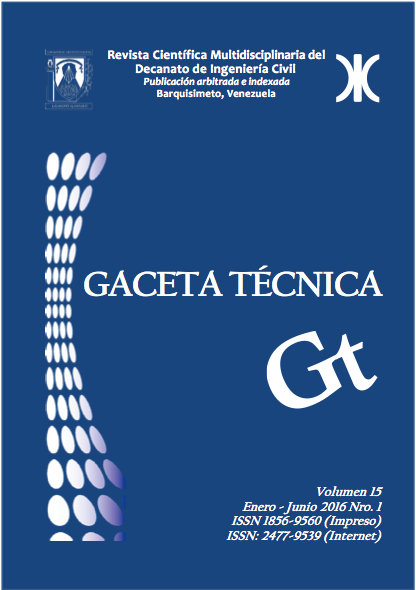Mobile technology in civil engineering programs
DOI:
https://doi.org/10.13140/RG.2.1.3284.3764Keywords:
mobile devices, enterprise mobility, civil engineeringAbstract
Today it is evident the use of technologies in all activities people do, becoming an inevitable phenomena socially, at work and educational. In terms of work, one can see how companies are using technologies as tools to do many activities inside and outside of it like the use of mobile dispositive enhancing new managerial models like the company mobility. The new organizational models are making civil engineering programs to point out the skills students should have during a professional training in order to fulfill in an organization with a company mobility model. It is also important to consider the competences of students that have been conceived by the effect of technological developments, where you can see Students that use and receive information in a very fast way, prefer and plan networking, apply and multitask parallel processes, and are able to handle any devices, in special Mobile, among other attributes. These characteristics activate in students the BYOD Principle, which strengthen their technological skills within the university context, inducing students in civil engineering, to learn the culture of bringing their own device to the learning environment before being transferred to the employment context, important attribute Faced with the adoption of enterprise mobility model.
Downloads
References
[2] CITRIX, “Viaje al valor de la movilidad empresarial Construya una base de movilidad segura. Mejore la productividad móvil. Transforme su negocio” Disponible en: https://www.citrix.com/content/dam/citrix/en_us/documents/products-solutions/the- enterprise-mobility-journey-to-value-es.pdf. 2015
[3] J. P. Jiménez, “51% de las empresas creen que movilidad empresarial es solo utilizar dispositivos” Disponible en: https://www.citrix.com/blogs/2016/02/19/51-de-las- empresas-creen-que-movilidad-empresarial-es-solo-utilizar-dispositivos/. 2016
[4] Madridmobilityday, “La movilidad como palanca de cambio en la empresa. Informe Las soluciones digitales en la empresa española”. Movilforum 2015. Disponible en:: http://www.madridmobilityday.com/wp-content/themes/mobilityday/des/2015/ La_movilidad_como_palanca_de_cambio.pdf. 2015
[5] OEI, “Metas Educativas 2021: la educación que queremos para la generación de los Bicentenarios” Madrid: OEI. Disponible en: en: http://www.oei.es/metas2021.pdf. 2010
[6] F. Vargas, “Escenarios y tendencias en el mundo del trabajo y de la educación en el inicio del siglo xxi: el nuevo paradigma del aprendizaje a lo largo de la vida y la sociedad del conocimiento. Retos actuales de la educación técnico-profesional. Educación técnico-profesional” La colección METAS EDUCATIVAS 2021 es una iniciativa de la OEI. España. 2009
[7] T. Ayala, “El aprendizaje en la era digital. Revista electrónica diálogos educativos” Número 21 año 11. Disponible en: http://www.dialogoseducativos.cl/articulos/2011/
dialogos-e-21-ayala.pdf. 2011
[8] A. Villegas, “Proyecciones de las Tendencias NTIC y Posibilidades de Uso Educativo Entre 2015 a 2025” Disponible en: http://www.e-historia.cl/e-historia/proyecciones-de- las-tendencias-ntic-y-posibilidades-de-uso-educativo-entre-2015-a-2025/. 2015
[9] L. Johnson, S. Adams Becker, V. Estrada, A. Freeman, “NMC Horizon Report: 2015 Higher Education Edition”. Austin, Texas: The New Media Consortium. Disponible en: http://cent.uji.es/octeto/node/4469. 2015
[10] OPSU. Oficina de Planificación del Sector Universitario. “Libro de oportunidades de estudio” Disponible en: http://www.opsu.gob.ve/. 2016
[11] Tiching, “Los dispositivos móviles en educación: ¡una tendencia en aumento!” Disponible en: http://blog.tiching.com/los-dispositivos-moviles-en-educacion-una- tendencia-en-aumento/. 2015
[12] UNESCO, “Directrices para las políticas de aprendizaje móvil” Disponible en: http://unesdoc.unesco.org/images/0021/002196/219662S.pdf. 2013
[13] UNESCO, “10 aplicaciones para ingenieros” Consultado en: http://irwingunefm.blogspot.com/2014/04/10-aplicaciones-para-ingenieros_1.html. 2015
[14] C. E. Alario, “Apps para cálculo de elementos estructurales” Disponible en: http://www.enriquealario.com/apps-de-calculo-estructural/. 2014
[15] C. Matallana, “10 aplicaciones útiles para arquitectura, diseño y construcción” Disponible en: https://carlosmatallana.wordpress.com/2011/06/02/10-aplicaciones- utiles-para-arquitectura-diseno-y-construccion/. 2011
Published
How to Cite
Issue
Section
The opinions expressed by the authors do not necessarily reflect the position of the editor of the publication or UCLA. The total or partial reproduction of the texts published here is authorized, provided that the complete source and electronic address of this journal is cited. Authors have the right to use their articles for any purpose as long as it is done nonprofit. The authors can post on the internet or any other media the final approved version of their work.







.png)




